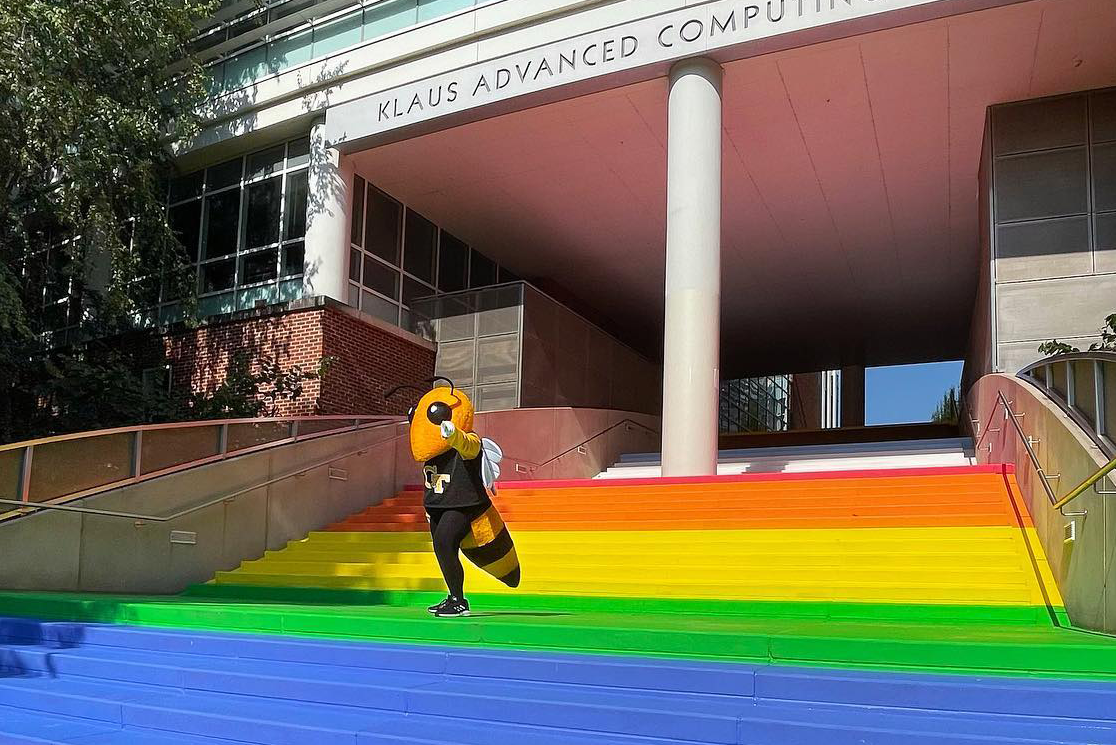A Resource for Georgia Tech Instructors and Advisors
Negative attitudes and behaviors toward LGBTQIA students can create significant obstacles to their success. This resource provides strategies for creating LGBTQIA-inclusive classrooms.
CLASSROOM PRACTICES

Increase Your Knowledge
Refresh yourself on LGBTQIA terminology and basic concepts each semester.
Make Your Syllabus Inclusive
Review your syllabus prior to the start of classes and remove any language that excludes or marginalizes LGBTQIA people. Add a statement of inclusion to it and establish guidelines for respectful classroom discussion and interactions.
Names and Pronouns
On the first day of class, call roll by last name and ask students to respond using their first name and pronouns. Explain why you are doing so. Model the behavior through your own introductions, and include your pronouns in your course syllabus, online bio, and email signature block. Do not address mismatches of names during class; instead, contact the student later, in private or by email.
In a large class, use a class survey or table tents for each student, where they can write their own name and pronouns. It will be easiest for students to update their name in virtual settings. Provide time and encourage students to update their name and pronouns each class session. Pronouns can also be updated and changed on Canvas.
Avoid Making Assumptions
Don’t assume someone’s sexual orientation or that you can tell if someone is transgender. Also, remember that gender identity and sexual orientation are different. If you do not know a student’s name or pronouns, refer to them by gender inclusive descriptors, such as “the student seated in the back corner” or “the student in the yellow shirt." Use they/them pronouns until you know the pronouns someone uses for themselves.
Know the Location of Gender-Neutral Restrooms
Point out the location of the nearest gender-inclusive restroom so students can access it before/after class or during breaks.
Use Inclusive Language and Examples
Incorporate LGBTQIA-affirming examples, case studies, and readings into your classroom and curriculum. Facilitate class discussion on LGBTQIA topics. Avoid using gendered language such as he or she or addressing a group as “ladies and gentlemen.” Instead, use non-genderspecific language, such as "everyone" or "students". Avoid dividing students into male and female groups.

Do Not Use or Tolerate Anti-LGBTQIA Humor or Remarks
Shut down harmful conversations, speculation, or inappropriate humor. Hold others accountable and address issues directly and immediately with the students or colleagues responsible. Follow up with the student(s) being excluded to offer support.
Address Mistakes
If you make a mistake about someone’s pronoun, correct yourself. This saves the person who was misidentified from having to correct an incorrect pronoun before it is planted in the minds of anyone who heard you.
Correct Others
Allowing the mistake to go uncorrected ensures future uncomfortable interactions for the person who is being misidentified. For example, if a colleague uses the incorrect pronoun for a student, simply respond with, “I believe Gina uses she and her pronouns.”
Why Should I Include Pronouns?
It provides an opportunity for others to tell us how they want to be referred to and disrupts the likelihood of us making assumptions that could lead to misgendering and microaggressions.
Preferred Name Updates
The Institute offers the ability for a student to designate a preferred first name and/or middle name or initial in addition to their legal name. The name will appear instead of the legal name in the Georgia Tech online directory and in many other campus systems, including class and grade rosters propagated by Banner/OSCAR. The Name Change Form and additional details are available on the Registrar's Website. NOTE: Not all campus systems pull from the same data source. Be sensitive to any discrepancies.
Learn More
Participate in Safe Space Foundations and other programs offered by the LGBTQIA Resource Center.